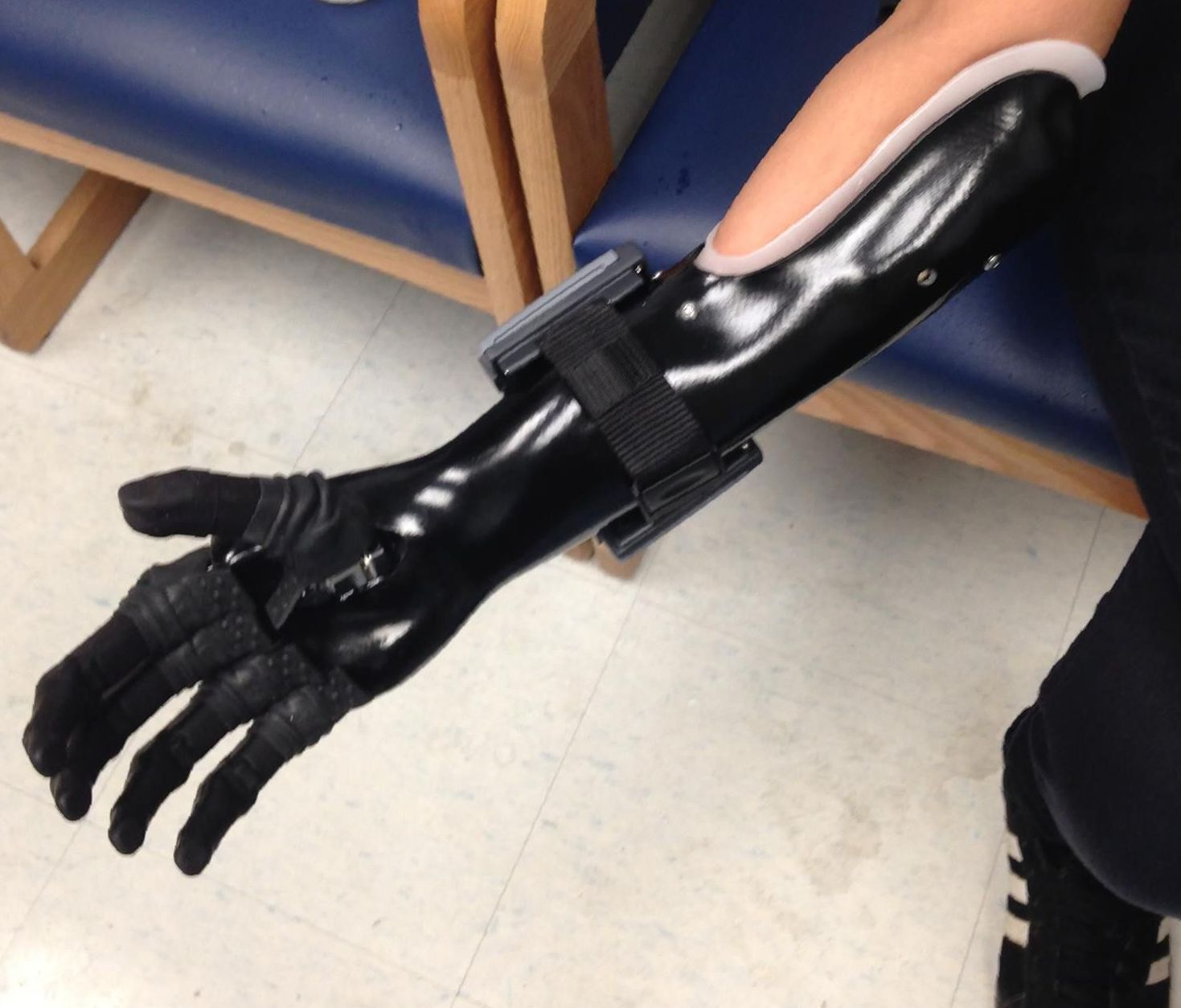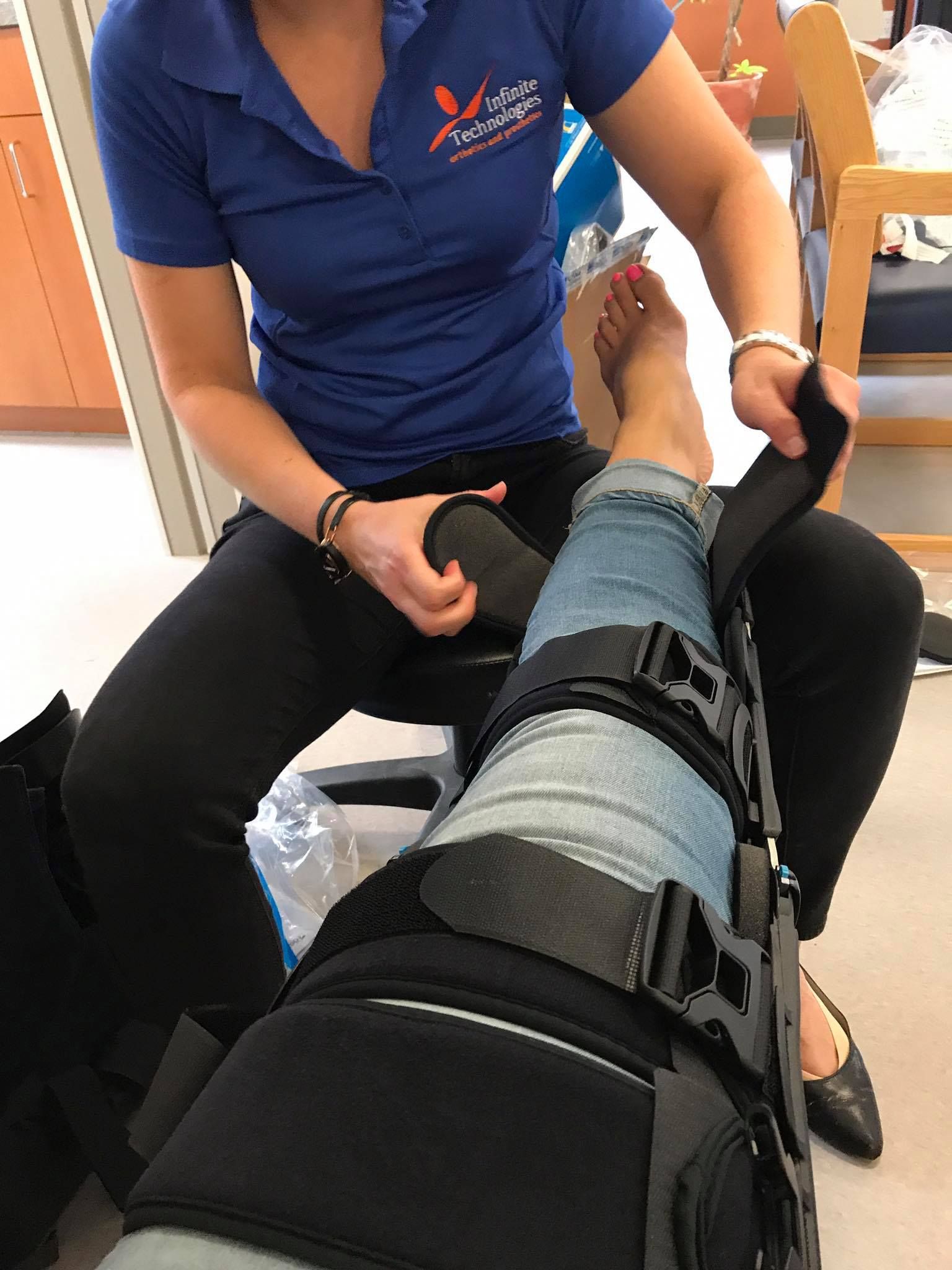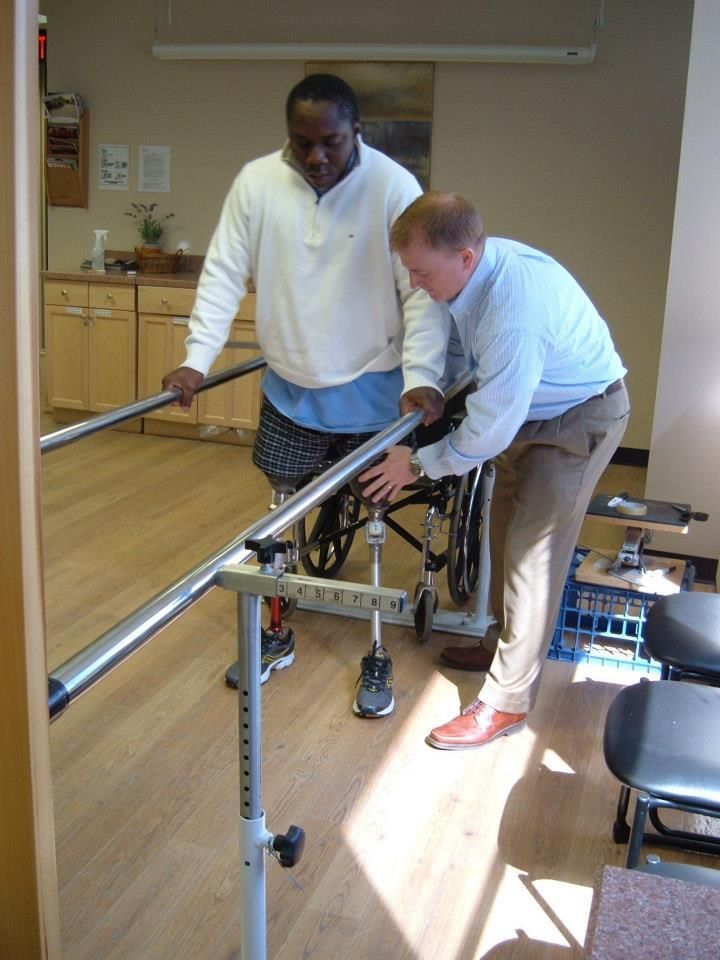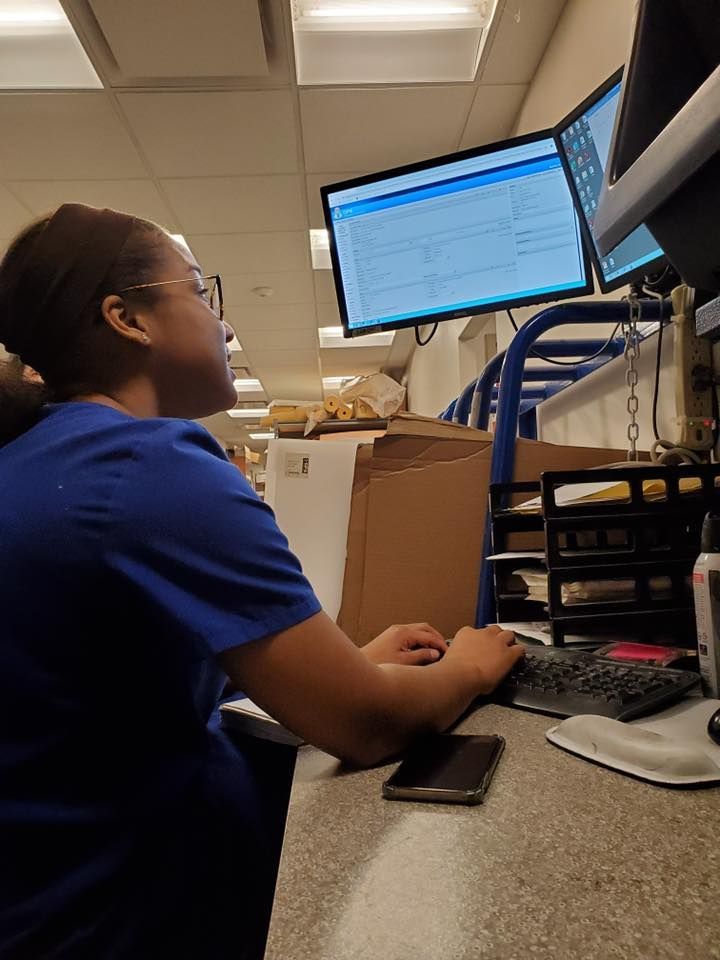Contact Us
Above Knee
Above Knee Leg Prosthetics
An above knee (AK) or transfemoral (TF) prosthesis is custom made for a person who has had a AK or TF amputation. The prosthesis consists of a custom made socket, liner, knee, pylon, and foot. Sometimes the prosthesis may consist of a sleeve or other harness, depending on the suspension system used for that patient.
Beginning the Process
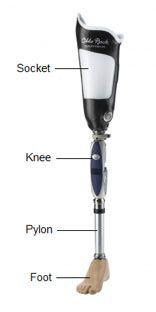
The process to start getting a AK prosthesis can start as soon as a few days/weeks after the amputation. The patient can be fit with an IPOP (Flotech or custom made) in the hospital or rehab center to help to protect patients’ surgical wounds, promote healing, controls swelling/edema and allows patients to become accustomed to wearing a device. The patient can also be fit with an AK Shrinker. A shrinker is a compressive garment that is used to help shape the limb for prosthetic process and reduce edema in the residual limb. It is similar in concept to using ace wrap, but the benefit is that the same compression will be applied throughout the limb, even when donned by different people. This will also help to desensitize the limb to get it ready for a prosthetic socket. These shrinkers are usually made by Juzo and Compressogrip- Knite Rite. After surgery, the patient’s limb will change size and shape up to the next year. The shrinker will help stabilize the limb size earlier on and give the patient a more successful prosthetic experience.
Liners and Cast/Scan
The next step in the process is to have the patient fit with a liner. The liner is a soft interface that the patient wears over the skin. It is donned before the socket. The main function of the liner is to absorb the forces created when ambulating in your prosthesis, to keep your residual limb healthy, and to allow you to wear the prosthesis for longer.
There are many different liners on the market and your prosthetist will pick the best liner for you. This is based on many factors, including suspension type, activity level, skin issues, hand dexterity, boney prominences , shape, etc. There are off-the-shelf (OTS) and custom liners. If the residual limb is an uncommon shape or very boney, custom liners may be used. These are made by taking an impression of the patient’s limb via a plaster cast or scan using our several different scanners/software. The process of obtaining a custom liner takes longer than obtaining an OTS liner. If the shape of the limb is common, measurements are taken to order the proper sized OTS liner.
Once the liner is ready to be fit on the patient, they are called to come back into the office for a casting appointment. The liner will be donned onto the patient’s limb and the fit will be assessed. If the fit is well, measurements and a cast of the limb will be taken over the liner. Different casting methods will be used based upon the suspension style that was previously decided upon by the prosthetist and patient. From here, the cast will be filled and modified appropriately to make your custom AK diagnostic prosthetic socket.
Diagnostic sockets
The first prosthetic socket you will receive will be called a diagnostic socket. This socket will be made of a clear plastic, utilizing the appropriate suspension method (pin/locking, elevated vacuum, suction). The socket will be donned while the patient stands and puts weight onto the residual limb. Usually, these sockets are made to not be taken home by the patient at this time, but can be made to walk on to check alignment at the second diagnostic fitting appointment. A plastic diagnostic socket is used to start with as parts of the socket may need to be modified to appropriately contour to your limb. This can be easily done by heated and flaring the plastic.
A second diagnostic socket may be needed to adjust the first diagnostic socket to give the patient a better/more appropriate fitting socket. The better the fit of the socket for AK prosthesis, the higher the rate of success is in ambulating with one.
Laminated/Final socket
Once we have confirmed the diagnostic prosthetic socket fits the patient well, we can move on to the laminated socket. The laminated socket is fabricated using carbon fiber, which means it is much lighter than the plastic socket and has a higher tensile strength. Carbon fiber is also more durable, son the socket will be able to last up to a few years, depending on activity level and any limb changes. The patient can choose to have the socket custom designed/colored to meet their personality, which may to have the socket color match their skin tone or have their favorite sports team logo on the socket. Depending on the style of suspension, there may be an inner socket may of Proflex, which is a softer plastic inside the outer carbon shell.
The prosthesis will be donned with the patient several times, allowing the patient to be able to don/doff it themselves. Height and alignment will be adjusted accordingly. Gait training will be performed to help the patient get use to using the limb. Physical therapy will play an important part of gait training and strengthening their lower limb muscles outside of appointments with your prosthetist.
Prosthetic Knees
Once we have confirmed the diagnostic prosthetic socket fits the patient well, we can move on to the laminated socket. The laminated socket is fabricated using carbon fiber, which means it is much lighter than the plastic socket and has a higher tensile strength. Carbon fiber is also more durable, son the socket will be able to last up to a few years, depending on activity level and any limb changes. The patient can choose to have the socket custom designed/colored to meet their personality, which may to have the socket color match their skin tone or have their favorite sports team logo on the socket. Depending on the style of suspension, there may be an inner socket may of Proflex, which is a softer plastic inside the outer carbon shell.
The prosthesis will be donned with the patient several times, allowing the patient to be able to don/doff it themselves. Height and alignment will be adjusted accordingly. Gait training will be performed to help the patient get use to using the limb. Physical therapy will play an important part of gait training and strengthening their lower limb muscles outside of appointments with your prosthetist.

Single Axis
A simple hinge, usually with adjustable friction for swing phase damping. Most reliable alternative available, especially suitable for those living in remote areas. An example of this is the S.A.F.K. by Hosmer.

Manual Locking
This knee is the most stable knee used in prosthetics. The knee is locked during gait and the patient releases the lock mechanism in order to sit down. Manual locking knees are primarily used with patients who have very short residual limbs and/or poor hip strength and are unable to control the knee. This is the knee of last resort. An example of this knee is the 3R33 by Otto Bock.

Stance Control
This knee is very stable and is often prescribed for a first prosthesis. When weight is placed on the prosthesis, the knee will not bend until the weight is displaced. This system functions as a constant-friction knee during leg swing but is held in extension by a braking mechanism as weight is applied during stance phase. This knee is a common choice for older or less active amputees. An example of this is the 3R49 by Otto Bock.

Polycentric
These knees have multiple centers of rotation, which can provide a number of unique functional capabilities. These are designed to offer enhanced knee stability in early stance phase, combined with the ability to flex under weight bearing, just prior to swing phase. This is highly advantageous for the more active individual. Very useful for longer TF limbs and knee disarticulations. An example of this knee is the Total knee by Ossur.

Fluid Controlled: Hydraulic/Pneumatic
These knees have chambers in them filled with either gases, such as air, or oils, such as silicone. These allow a variable speed swing phase. Due to the properties of a fluid-filled cylinder, the amputee is able to increase and decrease walking cadence with the knee automatically compensating. Pneumatic are mainly for a normal speed cadence while hydraulic control units are used for more moderate to higher cadences. An example of this would be the Mauch Knee by Ossur.
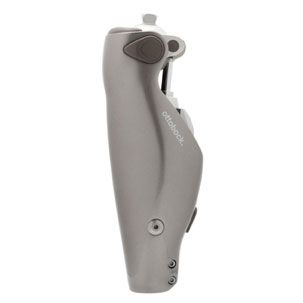

Microprocessor
These knees improve mobility and reduce the risk of injury from falls, which leads to better overall health and well-being for wearers. All computerized knees include a microprocessor, software, sensors, a hydraulic or pneumatic resistance system and a battery. Sensors monitor and detect changes in the environment, such as walking on a different surface, going up or down a slope or walking at a different speed. Based on that feedback, the microprocessor adjusts the resistance to knee flexion (bending) and extension (straightening) to accommodate walking speed and terrain. This enhances stability and security for the user. Other features are typically included such as stumble recovery, controlled descent of ramps and controlled recline into a seated position. The technology continues to evolve, offering prosthetic wearers even smarter knees with improved sensors and longer battery life. There are MCP systems now that connect the knee to the foot so they can communicate throughout the gait cycle. When the foot detects that it is going down a ramp, it sends a signal to the knee to increase knee flexion resistance to make it safer to walk down the ramp. Examples of the MCP knee is the C-leg 4 by Otto Bock and the MCP system is the LINX system by Endolite.
Technologies / Devices
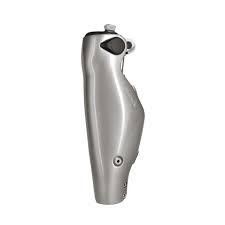
C-Leg
C-Leg technology offers the advantages of permanent stance phase control, the ability to weight the prosthesis during flexion, dynamic alignment, less energy expenditure while walking, and relief for the sound side and the rest of the body.

Rheo & Rheo Knee XC
Integrated angle and force sensors deliver important information about the dynamic behaviour of the user, which artificial intelligence (AI) in the microcontroller uses to determine ground conditions – whether the user is on stairs, a slope, or level ground, for example.
The RHEO XC comes with a number of new features, including enhanced stability control, new exterior, and new smart extension, to help you move from early rehabilitation to full recovery.
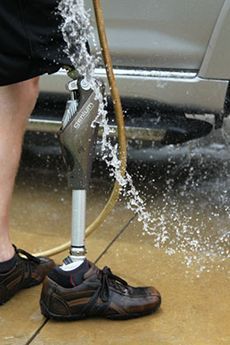
Genium Bionic Prosthetic Knee System
This state-of-the-art microprocessor-controlled knee joint utilizes a complex sensory system and sophisticated rule sets to mimic natural gait more closely than any other prosthetic knee.

Power Knee
The POWER KNEE remains the world‘s first and only motor-powered, artificially intelligent prosthesis for above-knee amputees and defines the future of lower extremity prosthetics.
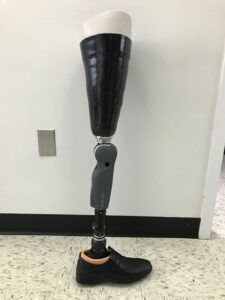
Direct Socket
Direct Socket Transtibial and Transfemoral is a socket solution for amputees of all activity levels. We are the Premium partner in the area with Ossur to provide this technology.
WHY CHOOSE US
What Makes Infinite Technologies Different
Comprehensive Approach to Care
Empowerment Through Education
Goal Setting
Lifelong Partnerships
Your Personal
Health Champions
Infinite Technologies Orthotics and Prosthetics is the premier orthotic and prosthetic facility in the Mid-Atlantic region providing inpatient and outpatient services, consults, and evaluations for adult and pediatric patients. Through our unique approach to comprehensive care, education and goal setting, we forge lifelong partnerships with our patients in their efforts to heal, while introducing them to the most innovative technologies for their individualized treatment.
Get Started With Infinite Technologies
Take the first step towards a life of improved mobility. Schedule your free consultation with our experts at Infinite Technologies and see the difference personalized care can make.
Request An Appointment

